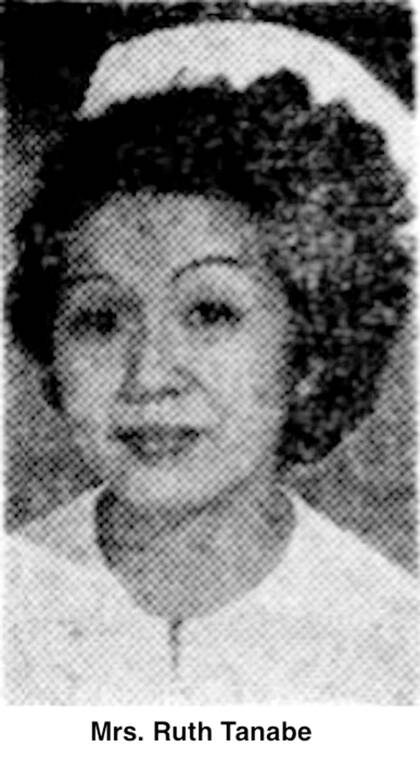In February 1942, during World War II, President Franklin D. Roosevelt signed Executive Order 9066 that authorized the forced removal of all persons deemed a threat to national security from the West Coast to inland relocation centers.
His order resulted in the evacuation from their homes, and the incarceration in internment camps, of thousands of West Coast Japanese Americans, many of them U.S. citizens – one of the most atrocious violations of American civil rights in the 20th century.
Ruth Ochiyo Tanabe (1909-2004), born at Makaweli, Kaua‘i, the daughter of Kokyu and Ushi Nakasone, was one of them.
At the time, she was a registered nurse living in Los Angeles with her husband Paul Jitsuo Tanabe of Hilo, a produce salesman.
In July 1942, Ruth and Paul were ordered to evacuate, which meant they needed to quit their jobs and sell almost everything they owned.
A month later, they arrived by train at the Poston, Arizona, internment camp, which housed about 19,000 people, and were assigned to Camp Three, Block 326, Barracks 14, Apartment C.
Their 17 foot by 10 foot apartment was furnished with only two canvas army cots and straw-filled mattresses.
Paul began fixing things up.
With cardboard he took from the mess hall, he papered the plasterboard walls and made a ceiling.
He also built three wooden tables, a closet, a screen door and a wooden sink, and he sealed knot holes and cracks in the floor by nailing the tops of tin cans over them.
Yet, in cold weather, their apartment filled with smoke, since their stove leaked and there were no stovepipes or chimneys.
Privacy was minimal.
They used the community laundry, mess halls, latrines and showers.
Although Ruth volunteered as a nurse and Paul was assigned to the recreation staff, time still dragged on.
Finally, in June 1943, they were permitted to leave and went to Chicago.
Ruth eventually moved back to Hawai‘i.
Her second husband was Eugene Morita of Maui.
Ruth Ochiyo Nakasone Morita died in 2004. She is buried at the National Memorial Cemetery of the Pacific.


